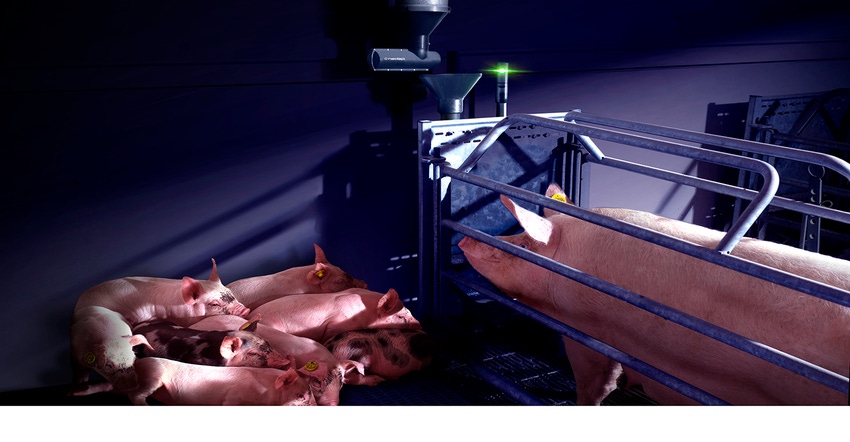How can you be sure exactly how much each lactating sow is eating, or when intake fluctuates?
September 11, 2019

Sponsored Content
There’s good and challenging news on piglet weaning trends. First, the good. The number of piglets weaned per sow, per year is projected to increase to 37.2 by 2025, a 106% increase from 1991. The challenge? Total sow milk yield has increased by an average of just 20% over the last 30 years.[1] While both litter size and sow milk yield have increased, milk yield hasn’t kept pace. And the solution can be found in sow nutrition.
Meeting the demanding nutritional needs of lactating sows is tough. Feed curves and ad-lib feeding can help maximize intake and milk production after farrowing. But just because you’re following a feed curve, that doesn’t mean your sows are.
How can you be sure exactly how much each lactating sow is eating, or when intake fluctuates?
Maintain farrowing barn presence without always being present
Automated farrowing feeding offers the benefits of ad-lib and drop feeding systems — and then some. A drop feeder delivers pre-scheduled “appetizer”-sized portions of fresh feed on a preset schedule. Using an add-on feature to the farrowing feeder, a sow can trigger an activator placed in the feeder to “ask” for additional portions, getting ad-lib portions of fresh feed without needing employees to facilitate the feeding.
If a sow doesn’t ask for additional portions, automated farrowing feeding systems can send an alert. Producers know when eating activity drops and intervene before milk production drops.
Feed frequently, feed for need with data monitoring
By increasing feeding frequency with smaller fresh portions, automated farrowing feeding can also stimulate appetite and maximize overall feed intake.[2] Real-time data collection enables producers to monitor feed intake trends of individual sows and evaluate overall herd averages to see measurable results.
Then, producers can easily develop and adjust strategic feed plans for each sow using a computer or smartphone. Each sow gets a meal plan that caters to her nutritional needs — maximizing milk production and providing the nutrients needed for her growing litters.
Find feed quality issues faster
Weather-delayed crops and variable crop maturity could elevate the risk of mycotoxin presence in feeds this fall, potentially effecting all phases of pork production. Mycotoxins can contribute to lower feed intake, body score and milk yield in sows.
Automated farrowing feeding can play a critical role in earlier identification of feed quality issues. Individual sow and overall herd feed intake data indicate whether a drop in feed consumption is affecting one sow or the entire herd. Then, the producer can take appropriate action. When mycotoxins or other feed quality issues require a management change, data help producers assess and address the challenges faster. These results can help avoid drops in feed intake and milk yield.
Nedap Farrowing Feeding makes it easy to care for each individual sow in your farrowing room. The new Nedap Activator is the first wireless trigger designed to combine your feed strategies with your sows’ feed demand. The Nedap Activator delivers fresh, precise rations on-demand and alerts you if a sow doesn’t eat, so your sow and pig performance is maximized.
Visit farrowingfeeding.nedap-livestockmanagement.com to learn more about Nedap Farrowing Feeding with Nedap Activator.
[1] van Heutgen, E., Rosero, D.S., Boyd, R.D., (2019) “From Gilt to Multiparous Sow – High-efficiency nutrition for maximal lifetime production” International Production and Processing Expo, Atlanta, GA.
About the Author(s)
You May Also Like



